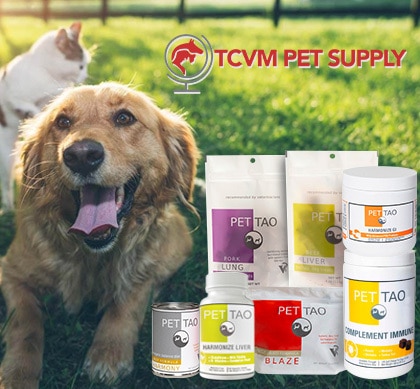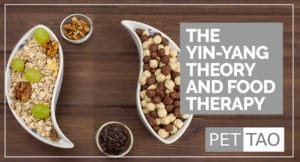Are you concerned strong pharmaceuticals are the only option for treating dog arthritis pain?
Don’t worry – you have plenty of non-medication options!
One effective alternative treatment for dog arthritis is a massage.
1. Massage Therapy
Massage helps relax stiff muscles and promotes the range of motion in the joints.
Massage is something you can do with just a few tips from your veterinarian.
Remember, your dog is in pain, so start slow and build trust.
With massage, we manipulate superficial and deep soft tissues. Massage is beneficial because it helps:
- Prevent adhesions of muscles, tendons, and ligaments
- Reduce muscle spasm, swelling, and joint stiffness
- Improve tissue relaxation and muscle flexibility
- Maintain muscle mass while decreasing pain
- Increase circulation
- Increase lymphatic flow
- Improve mobility of tissues
Best yet, dogs seem to enjoy massage and its benefits.
Before starting massage treatment on your dog, you must know a few things:
- Where is the pain – in the knee, carpus, hip, shoulder, or back?
- What are the general techniques and exercises?
- How often and how much should you massage your dog?
- Where in the body does the arthritis pain originate?
Massage certain joints in different ways.
Your veterinarian can tell you the exact joints affected and also give you tips on dog massage.
Here are some general rules of thumb for dog massage to get you started:
- A typical massage session should last 10 to 15 minutes in small and medium dogs but could be longer in large dogs. Morning massages can help with any overnight stiffness, while an evening massage is perfect for reducing any muscle pain from daily activities.
- When learning how to massage a dog, be sure to maintain a calm and relaxing environment to ease your pet into the massage session.
- Start by petting your dog all over, then focus on the area you wish to massage. Continue to stroke the area with a light amount of pressure. This will increase the circulation in the muscles. Be sure not to massage your dog’s painful joints but instead focus on the areas around the painful joints.
- Next, knead any tight muscles. Do not to overwork a muscle. If your pet begins to resist in a certain area, move on to another area that feels good for him or her.
- Alternate between periods of kneading and periods of lighter pressure to encourage circulation throughout the massage.
- To finish the massage, soothe your pet into a state of total relaxation by petting him all over, and be sure to give him a treat for good behavior!
- If you notice any areas of inflammation after the massage, wrap a cold towel around the area to help reduce swelling.
- Avoid giving your dog a deep tissue or intensive massage. Only a licensed canine massage therapist should perform these types of massages.
2. Physical Therapy
Another complementary treatment for dog arthritis is physical therapy.
Most academic centers and many private practices have certified animal physical rehabilitators available or on staff.
Physical therapy for your dog can include one or a combination of the following:
Aquatic Therapy
The buoyancy of the water takes the pressure off your dog’s injured or painful joints.
Water therapy involves underwater treadmills or swimming to reduce pressure.
Water therapy also improves your pet’s cardiovascular health, muscle strength, and range of motion.
Swimming uses natural canine motions to improve mobility.
Cryotherapy
Cold slows down blood flow to an injury, thereby reducing pain and swelling.
Cold therapy slows circulation, reducing inflammation, muscle spasm, and pain.
Heat Therapy
Heat opens up blood vessels, which increases blood flow and supplies oxygen and nutrients to reduce dog pain in joints and relax sore muscles, ligaments, and tendons.
The warmth can also increase the range of motion.
Heat is best for chronic pain.
Extracorporeal Shockwave Therapy (ESWT)
An ultrasound device transmits high-energy sound waves through your dog’s skin.
This causes soft tissues to vibrate and generate heat, increasing blood flow, oxygen and nutrients to the affected area.
3. Laser and Neuromuscular Electrical Stimulation
Low-level Laser Therapy
Laser Therapy reduces swelling and facilitates long-lasting pain relief by stimulating the release of your dog’s own pain-killing endorphins.
Neuromuscular Electrical Stimulation (NMES)
A low-volt electrical stimulation of motor nerves cause muscle contractions.
Contraction/relaxation of your dog’s muscles can help to improve musculoskeletal and vascular conditions.
Canine physical therapy utilizes applications of cold and heat, massage, stretching, and range-of-motion exercises to maintain joint health and muscle strength.
The soft tissues in dogs are identical to ours.
Dog physical therapy uses the same techniques for trigger point work, friction massage, and soft tissue and joint mobilization.
Physical therapy can relieve pain in your dog as well as promote cartilage, tendon, and ligament health.
4. Prolotherapy for Dog Arthritis Pain
Prolotherapy – also known as nonsurgical ligament reconstruction – is a medical treatment for chronic pain.
“Prolo” is short for proliferation, because the treatment causes the proliferation (growth, formation) of new connective tissue in areas where it has become weak.
Prolotherapy treats joint pain and increases joint ligament strength by 30-40% in human clinical trials.
Clinical results using prolotherapy in dogs appear to indicate the same response.
Many elite human athletes use prolotherapy to strengthen their weak tissues to prevent future injury.
Here’s how prolotherapy treats weak or torn tendons and ligaments:
- A tendon attaches muscle to bone, and ligaments connect bone to bone. Both are important for the stability and normal movement of joints.
- A proliferant (a mild irritant solution) gets injected into the affected ligaments or tendons causing a localized inflammation which “turns on” the healing process and stimulates the growth of new strong, healthy ligament and tendon tissue.
- Pain alleviates as the tendons and ligaments grow stronger and more capable of supporting and maintaining normal joint stability.
Prolotherapy is helpful for managing many different types of chronic musculoskeletal pain including:
- Arthritis
- Degenerative joint disease
- Torn ligaments, tendons, and cartilage
- Tendonitis
- Back pain
- Neck pain
- Degenerated or herniated intervertebral disks
Most dogs tolerate prolotherapy; however, it is most common in middle-aged to geriatric dogs. Most owners report a 50-80% reduction in pain within the first two treatments.
Prolotherapy is not a substitute for surgery as all animals are not candidates for this type of medical procedure. Vets evaluate each case on an individual basis.
Prolotherapy in dogs is suitable for:
- Animals with chronic osteoarthritic pain that involves one or more joints
- Geriatric animals with chronic arthritis or joint pain that are poor anesthetic candidates
- Animals with injury or tears of one or both anterior cruciate ligaments
- Performance animals (agility, working dogs) with ligament or tendon injuries
- Animals that are sensitive or have adverse reactions to conventional pain medications (Rimadyl, Deramaxx)
Does your veterinarian offer prolotherapy?
If not, what does he or she offer instead?
If your veterinarian does offer prolotherapy, have you tried it for your pup’s arthritis pain?
More Powerful Tools for Overcoming Dog Arthritis Challenges
There are many quick and easy changes you can make at home to help you give your dog an edge on easing dog arthritis pain.
- Learn more about dog arthritis.
- Try cooking for your dog or feeding high-quality dog food. Home-cooked diets and wet food help keep your pet from gaining too much weight. In turn, less weight means less stress on your dog’s bones and joints. PET | TAO’s Chill is one of our top choices for arthritic dogs.
- Ease your dog’s discomfort naturally. PET | TAO’s Comfort is a blend of Eastern herbs and Western supplements to soothe your dog’s arthritic challenges to make him/her more comfortable.
- Provide joint support. PET | TAO’s Harmonize Joint is a blend of Eastern herbs and Western supplements working together to lubricate and restore your dog’s joints.
- Try Freeze-Dried Kidney Treats. According to TCVM, the Kidney controls the bones and joints and supports arthritic challenges in a “like treats like” manner.
- Learn more about TCVM Herbal Remedies. Chinese medicine offers many amazing natural solutions for dog arthritis. Some good examples are:








